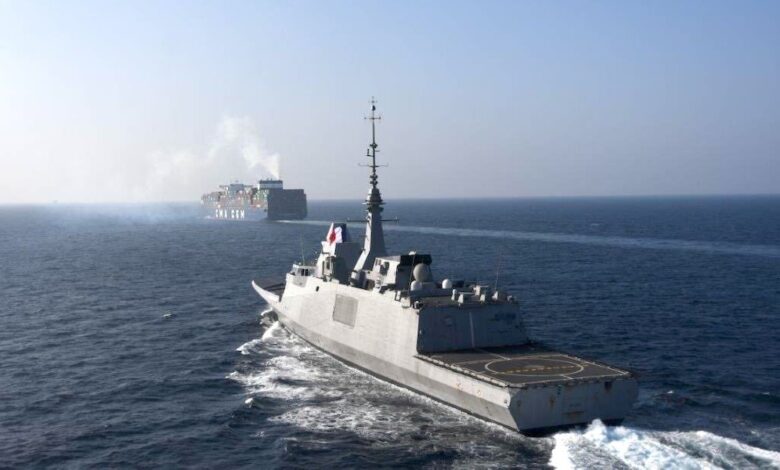[[{“value”:”

While no merchant ships have been attacked in the region this year, there’s little sign authorities believe the Red Sea shipping crisis is coming to an end anytime soon.
The European Union has announced it is extending the mandate of its maritime security operation, EUNAVFOR Aspides, for an additional year, reinforcing efforts to safeguard freedom of navigation in the Red Sea region. The operation will now continue until February 28, 2026, with a budget of over €17m ($17.8m) allocated for its extended period.
In addition to protecting vessels, ASPIDES has been authorised to gather intelligence on arms trafficking and shadow fleets.
Transits through the Red Sea and the Suez Canal have seen a very slight uptick in traffic in recent days, but most shipowners who have eschewed the region in favour of longer trips around the African continent are sticking with that policy as tension remains high in the Middle East with the ceasefire between Israel and Hamas still facing many hurdles.

CMA CGM has announced a new service from India into the Red Sea passing by the Houthis in Yemen, a rare move by a global liner to deploy tonnage to the region. The new service is operated by three vessels and is operated jointly by Saudi-based Folk Maritime and Oman-based Asyad Shipping.
An unloaded LNG tanker, Trader III, has been sailing through the Red Sea this week, the second vessel of its kind to take the passage so far this year.
The leader of the Houthis warned last week his fighters have their fingers “on the trigger” ready to resume their campaign against merchant shipping passing by the Red Sea in the event that the ceasefire between Israel and Hamas backfires.
No ships have been attacked this year, with the Houthis saying they will step back so long as Israel’s war with Hamas ends.
As and when the Red Sea does open up for merchant ship traffic will drive profits and losses for many shipping companies this year.
Top management at Maersk laid out earlier this month how the Houthis from Yemen could dictate the line between black or red ink for the coming year.
Maersk’s EBIT forecast for 2025 ranges from zero to $3bn, depending on whether the Red Sea opens in the middle of the year or the end of the year.
The post EU extends Red Sea naval operation into 2026 appeared first on Energy News Beat.
“}]] 
